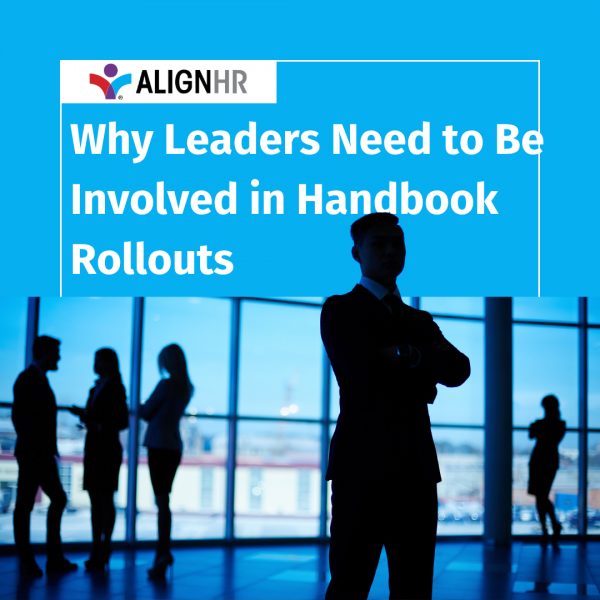
Updating your employee handbook is important—but how you introduce it to your team matters just as much. A poorly communicated handbook can feel like a legal formality. A well-rolled-out one, backed by leadership, can build clarity, trust, and culture.
“If leaders don’t take it seriously, why would the employees?” asked Zach Abraham, Principal and CEO of AlignHR. In Episode 3 of the Beyond Compliance podcast, Zach and Luke Hladek explained why strong rollouts start at the top—and how small businesses can do it right.
When leaders are involved in the handbook rollout, it signals that the document matters. It’s not just a legal requirement—it’s part of how your company operates.
A strong rollout creates:
Zach put it plainly: “People don't read handbooks for fun. They follow what they see. So when leadership reinforces policies through action and communication, people listen.”
Most businesses simply email the updated handbook and ask employees to sign. But rollout isn’t just about distribution—it’s about connection. Here’s how to do it well:
Gather the team—virtually or in person—and walk through the key updates. Don’t read the document word for word. Instead, explain:
When leaders participate in the walkthrough, it reinforces importance and builds transparency.
Explain the reasoning behind changes—not just what’s being added. For example, if you’ve added a remote work policy, connect it to values like flexibility or trust. If you’ve updated your anti-harassment policy, explain how it supports safety and respect.
“Employees are more likely to follow policies they understand,” Luke noted. “And they’ll understand them better if they hear it directly from leadership.”
Managers are the bridge between policy and practice. Equip them with:
If your managers are unsure how to use the handbook, your employees will be too.
A modern handbook should be a living document. After rollout, give employees a way to ask questions or suggest improvements. This builds ownership and shows your policies are meant to support—not control—the team.
Avoid these rollout missteps that can undermine your efforts:
Rollout is your opportunity to reset expectations and realign your team—don’t waste it.
Rolling out a handbook isn’t just HR’s job. It’s a leadership responsibility. When owners, executives, and managers participate, it signals that what’s in the document matters—and it encourages everyone to act accordingly.
Whether you’re launching a brand-new handbook or revising an outdated one, make sure your rollout plan includes your leadership team. That’s how you turn policies into action—and words into culture.
AlignHR partners with small businesses to build and roll out employee handbooks that support growth, reduce risk, and reflect company values. Learn more at AlignHR.com.
This blog is based on Episode 3 of Beyond Compliance with Zach Abraham and Luke Hladek. Listen to the full conversation below for more insight on handbooks, leadership, and smart HR strategy.